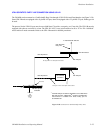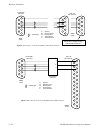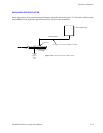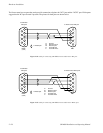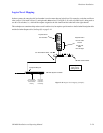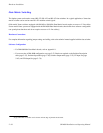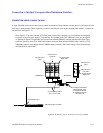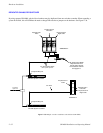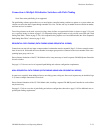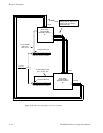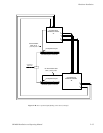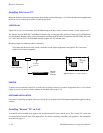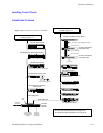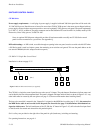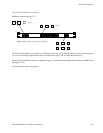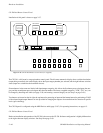Hardware Installation
2−33CM 4000 Installation and Operating Manual
Connection to Multiple Distribution Switchers with Path Finding
Note: Data router pathfinding is not supported.
The path finding software option allows two or more Jupiter−controlled routing switchers to operate as a system, where one
switcher can access the other’s inputs through a number of tie lines. Tie lines can vary in number from one switcher to another,
and from one level to another.
Two wiring schemes can be used: sequential wiring, where tie lines are organized in blocks (as shown on page 2−34); and
non−sequential wiring (as shown on page 2−35). Sequential wiring requires entries to only one file server table (the “Path
finding Data Table,” shown on page 5−174). Non−sequential wiring requires use of an additional table (the “Non−Sequential
Path finding Data Table,” shown on page 5−185.)
SEQUENTIAL PATH FINDING (PATH FINDING USING SEQUENTIAL WIRING)
Connections can start with any input or output number, but thereafter must be sequential. Page 2−34 shows example connec-
tions for one level. Notice that the lowest number in an output group must be connected to the lowest number in the corre-
sponding input group, and so on.
Due to distance limitations of the CC−2010 Matrix cable, it may necessary to install a separate CM 4000 System Controller
for each switcher.
See page 5−174 for an overview of sequential path finding and software configuration requirements.
NON−SEQUENTIAL PATH FINDING (PATH FINDING USING NON−SEQUENTIAL WIRING)
In some cases, especially when adding tie lines to an existing system, wiring new lines out of sequence may be desirable. Page
2−35 shows example connections for one level.
Due to distance limitations of the CC−2010 Matrix cable, installing a separate CM 4000 System Controller for each switcher
may be necessary.
See page 5−174 for an overview of path finding and software configuration; then refer to page 5−185 for additional non−se-
quential path finding requirements.



